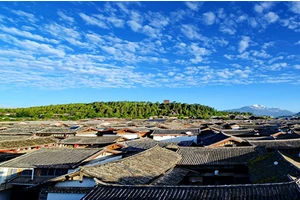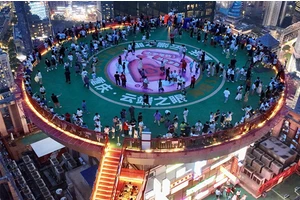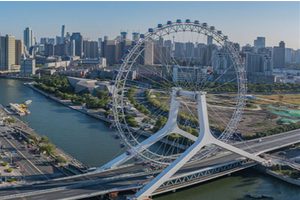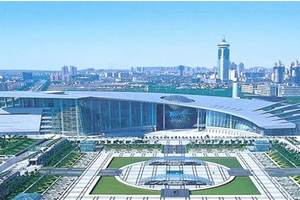Where does Xie Tongguan travel?
In the 34th episode of Ode to Joy 2, Guan Guan and Xie Tong went to Wuyuan, Jiangxi.
The glass bridge scenic spot where two people travel and play is in Wuyuan Huangling Scenic Area.
The total length of Huangling Cable Bridge of Leixin Bridge is 298.15m, the vertical height is 97m, and the glass plank road is laid in the middle section of 48m. It takes a lot of heart to climb such a high glass plank road. This is a feeling of excitement and a test of self-courage. Therefore, the cable bridge is named "the core bridge".
Guan Guan and Xie Tong also went to the Yushi Ancestral Hall in Wangkou Ancient Village to experience a folk activity "Dancing Grass Dragon Lantern"!
Wangkou Village belongs to jiangwan town, Wuyuan County, and is located in the east of Wuyuan. It was called Yongchuan in ancient times. It was named because it is located at the confluence of Shuanghe River and the water in front of the village is watery. It is an ancient Huizhou village where Yu is the main ethnic group.
There are 464 households with a population of 1,646, 13 natural villages and 24 villagers' groups, with 3,702 mu of cultivated land and 38,657 mu of forest land, covering an area of 11.02 hectares.
It was once declared as a world cultural heritage as an ancient residential project in southern Anhui. In 2002, it was awarded the title of "China Folk Culture Village" and "Jiangxi Famous Historical and Cultural Village", and in 2005, it was declared as "China Famous Historical and Cultural Village".
Ode to Joy 2 Xie Tong and Guan Guan went to Wangkou Village, Wuyuan, Jiangxi Province.
Wangkou Village belongs to jiangwan town, Wuyuan County, and is located in the east of Wuyuan. It was called Yongchuan in ancient times. It was named because it is located at the confluence of Shuanghe River and the water in front of the village is watery. It is an ancient Huizhou village where Yu is the main ethnic group.
There are 464 households with a population of 1,646, 13 natural villages and 24 villagers' groups, with 3,702 mu of cultivated land and 38,657 mu of forest land, covering an area of 11.02 hectares.
It was once declared as a world cultural heritage as an ancient residential project in southern Anhui. In 2002, it was awarded the title of "China Folk Culture Village" and "Jiangxi Famous Historical and Cultural Village", and in 2005, it was declared as "China Famous Historical and Cultural Village".






